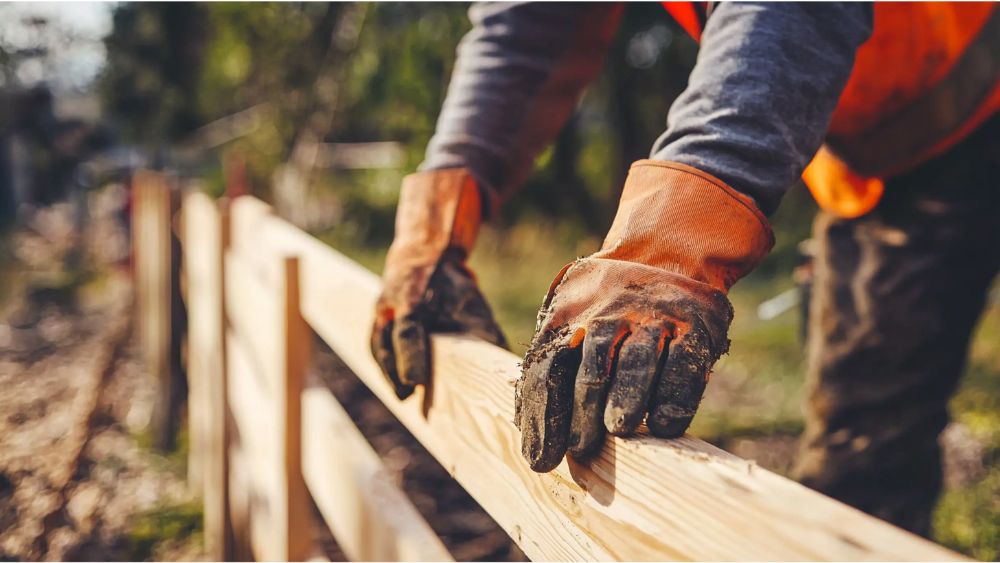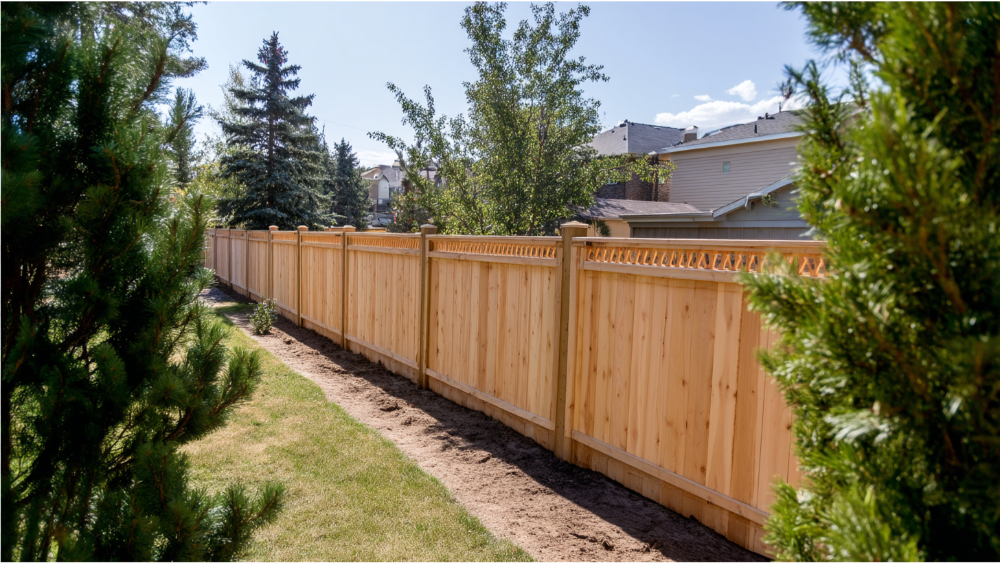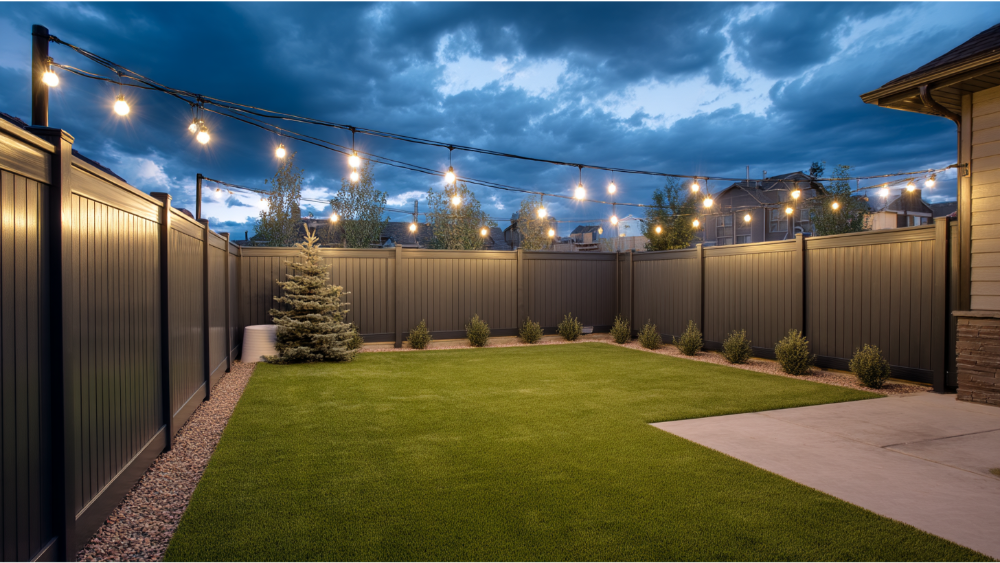Introduction
Thinking of adding a wood fence to your property this year? In 2025, a wood fence is one of the best ways to increase privacy, security and curb appeal, especially here in Washington State. Whether you’re in Seattle, Tacoma, Olympia or Spokane, knowing your true total cost before you start will help you avoid surprises and plan with confidence.
This guide breaks down several factors that affect wood fence pricing, from materials and labor to local regulations and add-ons. Whether you’re installing a full privacy fence or a decorative picket fence, we’ll show you how to approach your project strategically from quote to final post.
Average Wood Fence Cost in 2025

What’s the Cost Per Linear Foot?
In Washington, the average total cost to install a wood fence in 2025 is $24 to $45 per linear foot, depending on the materials used and the complexity of the project. This cost includes both material and labor and is for professionally installed fences, an important distinction.
Going with professional installation not only ensures structural integrity and code compliance but also saves homeowners time, reduces the chance of mistakes and increases the life of your investment. For a standard 150-foot residential wood fence, you can expect a total estimated cost of $3,600 to $6,750. Higher end projects with custom gates or slopes will be more and simpler designs with more affordable materials will be less.
These numbers are average costs for homeowners in Washington and are based on 2025 rates.
How Fence Length Affects Your Total Cost
Fence length is one of the only factors that scales with your cost. More fence means more materials, posts, footings and time on site. That’s why Inline Security Fence starts every project with a comprehensive on-site evaluation to determine fence layout, access points and the best approach for installation.
Examples:
- 100 feet = approx. $2,400–$4,500
- 200 feet = approx. $4,800–$9,000+
- If you’re enclosing a large lot or need a perimeter fence for acreage, the cost can add up. Longer runs may qualify for bulk pricing but still require a bigger investment overall.
Affordable Fence Options for Every Budget

Looking for a cheaper way to secure your yard without sacrificing quality? We have options for budget-conscious homeowners. Pressure-treated pine is one of the most cost-effective common wood types out there and performs well when sealed regularly. It’s a smart choice for short-term plans or rental properties.
Other ways to create an affordable fence:
- Reducing the standard height to 4 feet for front yards or gardens
- Choosing a picket or post-and-rail style instead of full privacy panels
- Limiting the number of corners or custom gates in your layout
- Phasing installation across two seasons
Budget-friendly doesn’t have to mean boring or temporary. We help you design fences that balance function, appearance and cost.
Factors That Affect Wood Fence Cost
Choosing the Right Wood: Why Cedar Wood Is the Northwest Standard
In Washington’s rainy and moss-prone environment, cedar wood is the go-to choice for durability and looks. Western Red Cedar in particular is a popular material because it’s resistant to rot, decay and insect damage, all without chemical treatment. This makes it an eco-friendly and long-lasting option especially for homes in wet, shaded or forested areas.
There are several factors to consider when choosing your wood:
- Pressure-Treated Pine: One of the most affordable common wood types, but requires regular maintenance
- Cedar Wood: Balanced in material cost and performance, naturally beautiful and durable
- Douglas Fir & Hemlock: Native to the Pacific Northwest but need sealing for longevity
- Redwood: Premium look and lifespan, but higher material cost and limited local availability
Your choice of wood impacts both the looks and long-term performance of your fence. That’s why understanding these factors that affect pricing is key to choosing the right solution for your home.
Fence Style and Fence Height: Design Matters
Fence style and fence height affect both the functional purpose and the cost of your project. Privacy fences are taller and use more wood, while picket and horizontal styles can vary greatly depending on spacing and layout.
Popular styles in Washington:* Privacy Fence (6–8 ft): For seclusion and backyard enclosures
- Picket Fence (3.5–4 ft): Classic for front yards or gardens
- Horizontal Slatted Fence: Modern, trendy and popular in urban areas
The standard height for most residential wood fences is 6 feet. Taller fences require special permits in many areas and may involve additional structural reinforcements. These height increases can add 10–20% to your total cost depending on how much extra material and labor is needed.
Labor Costs and Regional Variations

Labor costs in Washington are between $7 to $20 per linear foot, depending on location, site conditions and job complexity. Urban projects, like Seattle or Bellevue, can be more expensive due to tighter access, traffic delays and higher permitting costs.
Properties with large trees, heavy brush or difficult terrain may require clearing and grading before the fence can even be installed. This extra work adds time and labor to your project. Our crews are familiar with the topography and conditions in Pierce, Thurston and King counties and know how to work in every type of environment.
Fence Removal: Don’t Forget This Hidden Cost
If you’re replacing an older fence, you’ll need to include fence removal in your quote. Removing an existing fence is $3 to $7 per linear foot depending on the material, footing depth and whether any posts are set in concrete. Heavier or overgrown fences that are entangled with roots or trees may also require additional clearing before work begins.
Add-Ons and Upgrades That Impact the Price
Smart Fence Add Ons to Consider
Fence add-ons can take your project from functional to fabulous. From hardware to finishing touches, these details contribute to durability, usability and visual appeal.
Popular add-ons include:
- Walk-through and Driveway Gates: Customize your entry points with hardware and locking options
- Decorative Post Caps or Solar Lights: Add style and visibility
- Staining/Sealing: Highly recommended in Washington to prevent rot and mildew, $1–$2 per foot
- Custom Layouts: Horizontal slats, board-on-board, or lattice-topped styles
While these upgrades may add to your total cost, they often pay off in both usability and longevity. Many of our clients find that the right finishing details really make their property look and resale value.
Other Factors That Affect Wood Fence Cost

More Than You Think
Beyond materials and design, other factors come into play:
- Slope and Terrain: Installing on uneven ground may require stepped fencing, deeper posts or extra labor
- Access Challenges: Narrow gates, tight alleys or large trees can slow down progress
- Permits and HOA Rules: Different areas require different permits for height, design and setbacks
- Utility Locating and Site Clearing: Roots, stumps and buried lines need to be addressed before digging begins
- Time of Year: Spring and summer are peak season, winter and fall are off-season
We identify all these factors that affect pricing early on so you get a full quote with no surprises.
Additional Factors That Matter When Planning Your Fence
A Few Factors That Can Quietly Increase Your Overall Cost
When budgeting for a residential wood fence, there are a few factors that can significantly impact the overall cost, many of which homeowners overlook. These include not only materials and labor, but also site-specific challenges like weather conditions, soil saturation, and access limitations.
For example, Washington’s rainy climate can create muddy conditions that delay digging or post setting. Installing in off-peak seasons may seem ideal for scheduling, but wet ground can require drainage adjustments or weather-proofing techniques that add time and cost.
Terrain and Site Conditions Are Key Factors That Influence Installation
The layout of your land plays a huge role in both the complexity and cost of your project. Steep slopes, large trees, underground utilities, or boulders all count as factors that influence your installation process.
If your backyard includes garden beds, hardscaping, or tight access through side gates, these details may increase the time and labor required to transport materials and set posts correctly. These challenges often require custom solutions that raise the material cost and affect the schedule.
Long-Term Planning: Additional Factors That Impact Functionality
Your current needs aren’t the only ones that matter. Smart fence planning also considers future goals. Will you add a patio? Expand your garden? Install a storage shed? These are the kinds of additional factors that may not increase your upfront investment but will improve usability and reduce future modification costs.
Boosting Your Property’s Curb Appeal with Thoughtful Design
A fence does more than define your boundary, it helps shape the aesthetic of your home. Style, height, color, and orientation are all various factors that contribute to your property’s curb appeal. A well-designed fence can enhance visual symmetry, complement landscaping, and increase your home’s perceived value.
Real Fence Cost Examples from Washington Homeowners
Here’s what actual customers have paid for installed fences from Inline Security Fence:
- Olympia: 150 ft Western Red Cedar privacy fence (6 ft tall) with sealing and 1 walk gate — $6,100
- Seattle: 90 ft horizontal fence with steel posts and custom finishes — $5,200
- Spokane: 200 ft picket fence in pine with 2 gates and old fence removal — $4,850
Every fence is unique and pricing reflects the individual circumstances and preferences of the homeowner. Different factors influence the wood fence cost.
How to Budget for Your New Fence Project
Estimate Your Total Cost
Multiply your desired fence length by your estimated per linear foot rate, then add gates, finishes and fence removal.
Example Budget:
- 150 ft x $30 = $4,500
- 1 gate = $150
- Fence removal = $300
Estimated Total: $4,950
Get Multiple Quotes to Compare
Contractor pricing varies, so do workmanship, timelines and warranties. We recommend getting multiple estimates and asking what’s included. Inline Security Fence offers transparent quotes, detailed planning and professional installation you can count on.
Don’t Forget Maintenance
Even the best wood fence needs upkeep. Annual inspections and resealing every 2–3 years will extend the life of your fence, especially in areas with heavy rain, shade or trees nearby. Proper maintenance is key to protecting your investment and avoiding future repair costs.
2025 Wooden Fence Pricing FAQs
How much fence can I get for $5,000 in Washington?
About 120–160 feet depending on materials and design.
Is cedar wood worth the cost?
Yes. It lasts longer, looks better and resists Washington’s wet weather better than any other wood.
Do permits affect my fence cost?
Yes, especially if you’re going over the standard height of 6 feet or live in an HOA community.
Can I reuse parts of my old fence?
No. Old posts and panels are warped or rotted and will compromise your new installation.
Why Choose Inline Security Fence
Inline Security Fence serves Washington homeowners with precision, quality and service. Whether you live in King, Pierce, Thurston or Spokane County we know the codes, terrain and weather challenges of building long lasting fences in the Pacific Northwest.
Why us:
- Locally owned and operated
- 5-star reviews on Google, Yelp and Nextdoor
- Skilled crews, no subcontractors
- Transparent, fixed pricing
- Top grade cedar wood and weather resistant materials
- Guaranteed workmanship
Bottom Line: Build Smarter, Spend Wiser
A fence isn’t just about boundary marking, it’s about safety, privacy and value to your home. When you know the factors that affect wood fence cost in Washington and how each component, from material cost to add-ons, affects your total estimated cost, you’ll be able to make informed decisions.
Let’s design a fence that fits your budget and beautifies your property. Request your custom quote from Inline Security Fence today.




